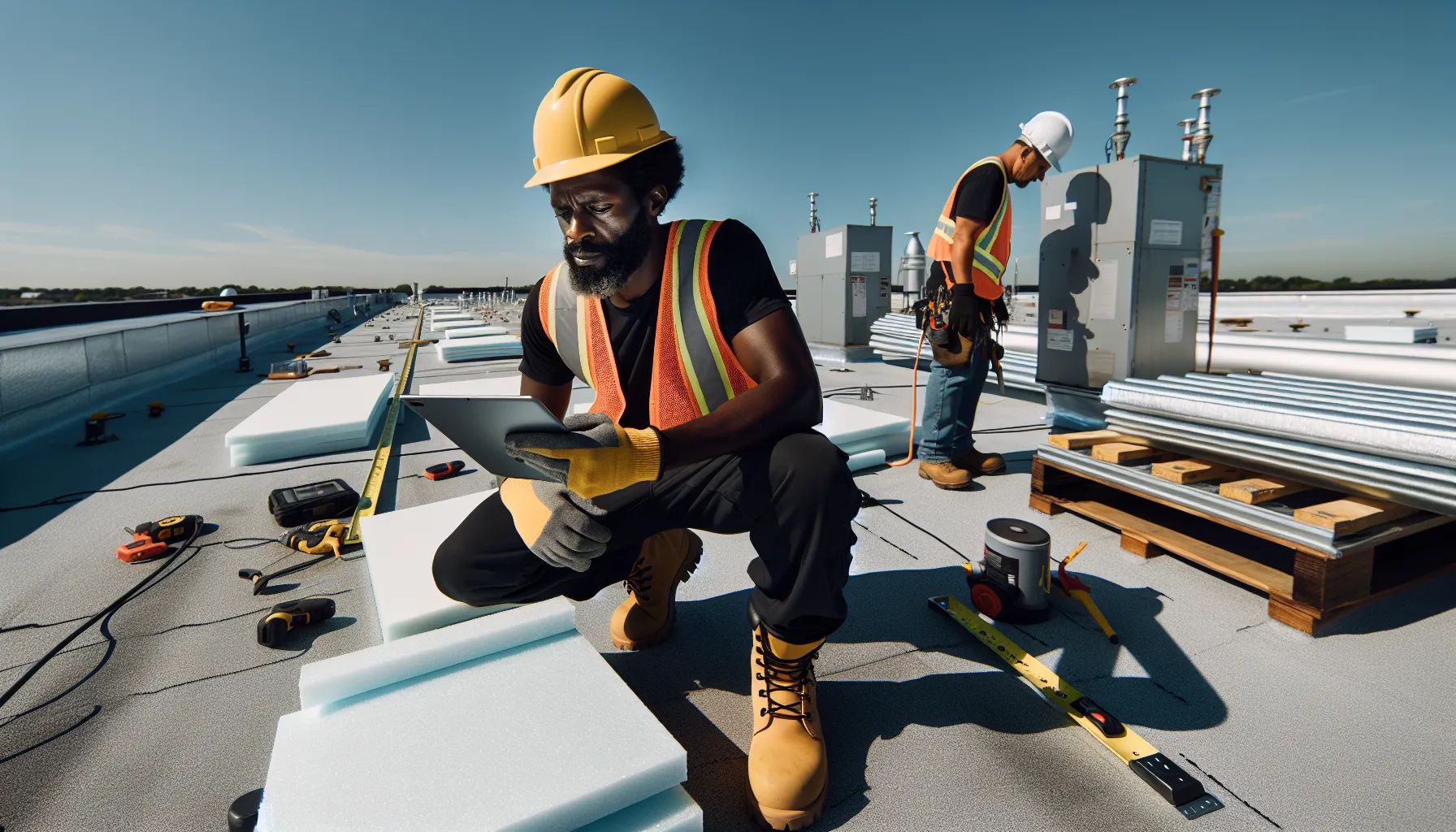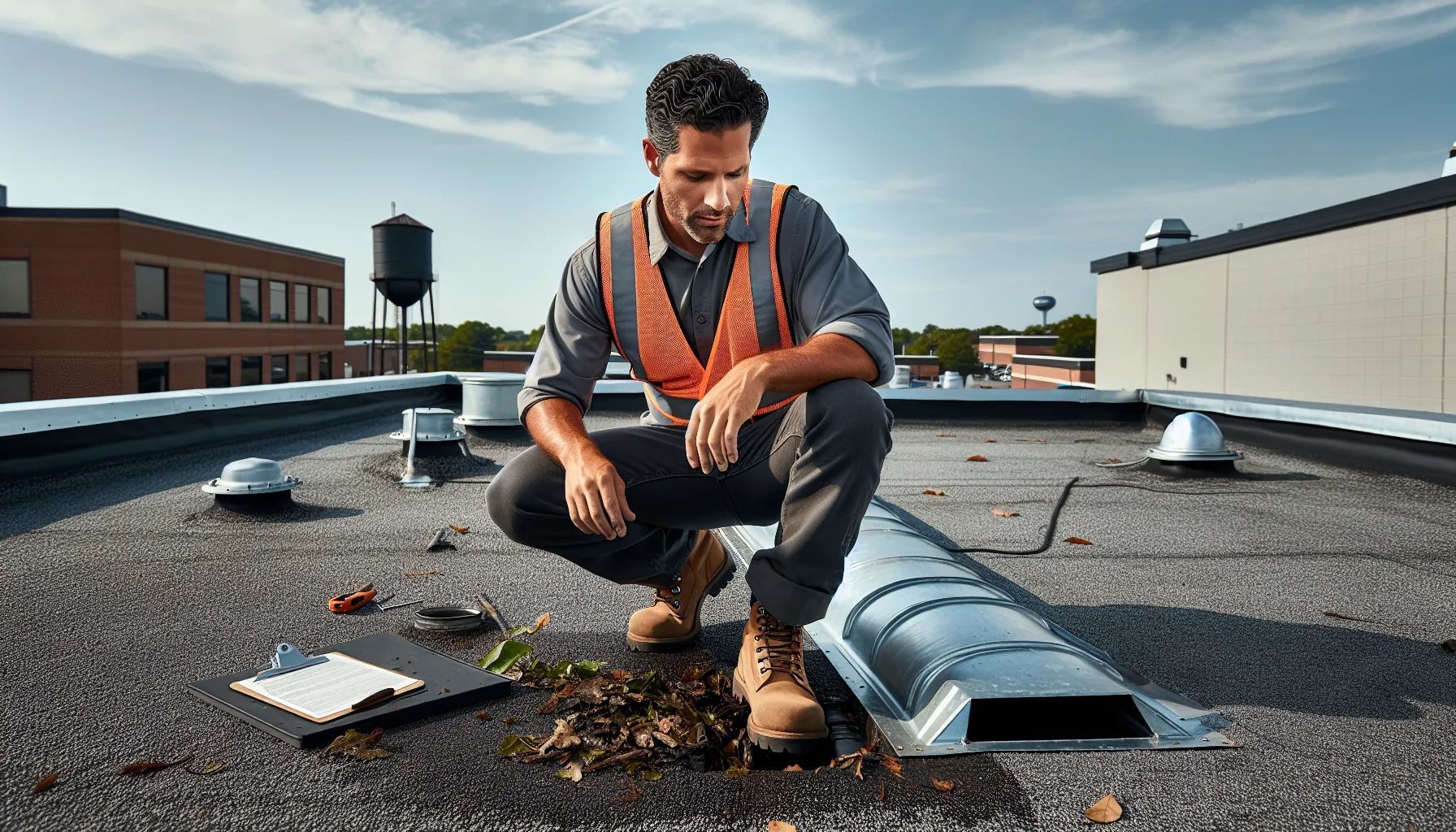How Long Does a Roof Last? Average Roof Life by Material Type & Warning Signs
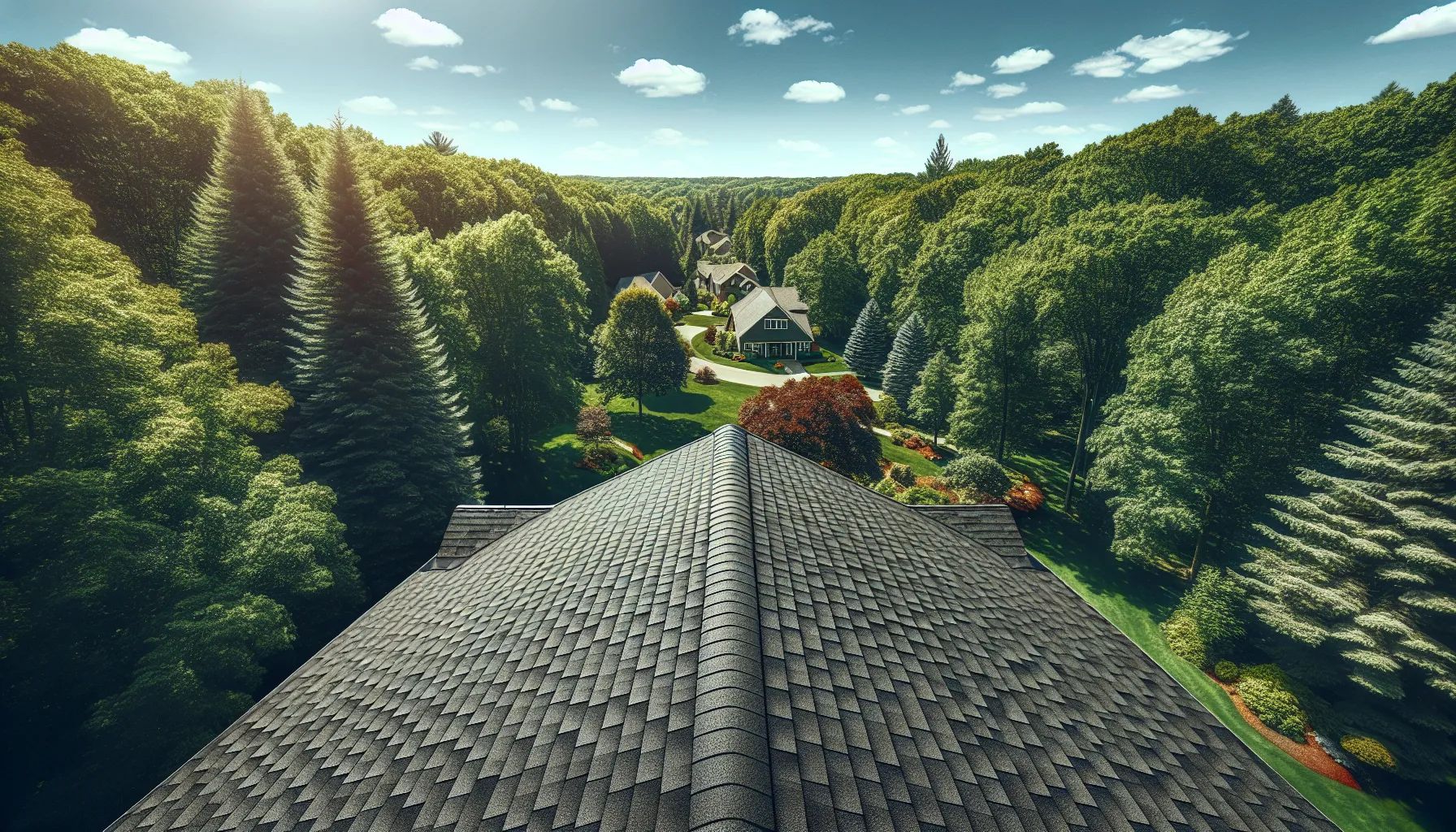
When we're making major home improvement decisions the average roof life becomes a critical factor in our planning and budgeting. It's one of those questions that keeps homeowners up at night - wondering if that small leak means it's time for a full replacement or if we've got years left before facing that hefty investment.
The truth about roof longevity isn't as straightforward as we'd hope. While manufacturers love to tout impressive warranty numbers there's a complex interplay of factors that determine how long our roofs actually protect our homes. From the materials we choose to the climate we live in each element plays a crucial role in this equation.
We've dug deep into the data and consulted with industry experts to bring you the complete picture of what really affects roof lifespan. What we discovered might surprise you and could save you thousands in premature replacement costs.
Factors That Affect Average Roof Life
Multiple factors determine how long a roof lasts beyond its initial installation. Understanding these variables helps us predict replacement timing and identify areas where we can extend our roof's service life.
Climate and Weather Conditions
Temperature fluctuations cause roofing materials to expand and contract repeatedly. This thermal cycling creates stress points that develop into cracks over time. Asphalt shingles in Phoenix experience 50°F daily temperature swings during summer months.
UV radiation breaks down chemical bonds in roofing materials. Southern states receive 25% more UV exposure than northern regions annually. Clay tiles resist UV damage better than organic materials like wood shakes.
Precipitation patterns impact roof longevity differently across materials. Metal roofs shed water efficiently and last 40-70 years in rainy climates. Wood shingles absorb moisture and deteriorate within 20-30 years in humid environments.
Wind speeds above 90 mph lift shingle edges and expose underlayment. Hurricane-prone areas see 30% shorter roof lifespans compared to calm regions. Impact-resistant shingles withstand 130 mph winds when properly installed.
Hail strikes create immediate damage that accelerates deterioration. Golf ball-sized hail (1.75 inches) cracks standard asphalt shingles on impact. Class 4 impact-rated shingles survive 2-inch hailstones without puncturing.
Roof Material Quality
Premium asphalt shingles contain 30% more asphalt than standard three-tab versions. Architectural shingles weigh 340-430 pounds per square compared to 200-300 pounds for basic options. Higher asphalt content provides better weather resistance.
Metal roofing gauges range from 29 (thinnest) to 22 (thickest). A 24-gauge steel roof outlasts 29-gauge by 15-20 years. Aluminum roofing in .032" thickness resists corrosion better than thinner .024" panels.
Slate grades vary from S1 (75+ years) to S3 (20-40 years) based on mineral composition. Welsh slate contains less calcium carbonate than Vermont slate. Lower calcium content prevents flaking and extends lifespan to 150 years.
Concrete tiles manufactured with proper water-cement ratios achieve 50-year lifespans. Tiles with 0.35 water-cement ratios develop 5,000 PSI strength. Lower quality tiles using 0.50 ratios crack within 25 years.
Cedar shake grades include premium (100% clear heartwood) and standard (sapwood allowed). Premium shakes last 30-40 years while standard grades fail within 20 years. Heartwood contains natural oils that resist decay.
Installation and Workmanship
Proper nailing patterns prevent premature shingle failure. Four nails per shingle placed 1-2 inches above the cutout line create optimal holding power. Six nails per shingle reduce wind uplift failures by 40%.
Underlayment installation affects moisture protection significantly. Synthetic underlayment overlapped 4 inches outlasts 2-inch overlaps by 10 years. Ice and water shield extends 24 inches past interior walls in cold climates.
Flashing details determine leak resistance at roof penetrations. Step flashing pieces overlap 2 inches minimum at wall intersections. Continuous flashing fails 60% more often than properly lapped step flashing.
Ventilation calculations follow the 1:300 rule for optimal airflow. One square foot of ventilation serves 300 square feet of attic space. Inadequate ventilation reduces shingle life by 25% through heat buildup.
Ridge cap installation protects the roof's most vulnerable point. Factory-made ridge caps outperform field-cut shingles by 15 years. Proper ridge cap overlap prevents 90% of ridge-related leaks.
Maintenance and Care
Annual inspections identify problems before major damage occurs. We examine 12 critical areas including valleys, flashings, and penetrations. Early detection of lifted shingles prevents water infiltration.
Gutter cleaning frequency depends on surrounding tree coverage. Properties with overhanging trees require quarterly cleaning. Clogged gutters cause water backup that rots fascia boards within 2-3 years.
Moss and algae removal extends shingle life in damp climates. Zinc strips installed at the ridge prevent organic growth for 15 years. Power washing damages shingle granules and voids warranties.
Attic insulation levels affect roof temperature and longevity. R-38 insulation (12 inches of fiberglass) reduces summer attic temperatures by 30°F. Lower temperatures prevent premature shingle aging.
Professional maintenance contracts include bi-annual inspections and minor repairs. Maintained roofs last 20-30% longer than neglected systems. Documentation of maintenance preserves warranty coverage.
Average Lifespan by Roofing Material
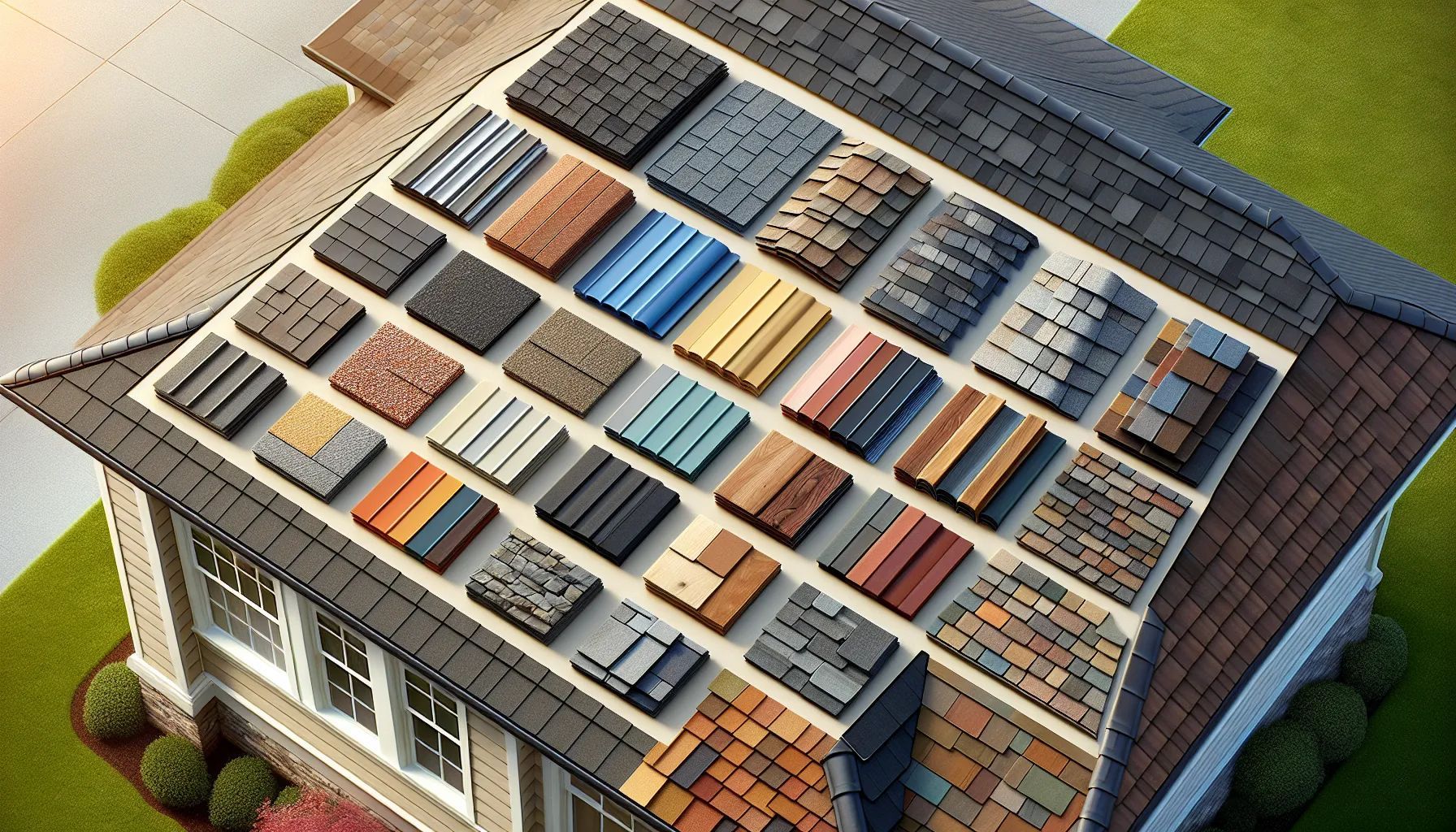
Different roofing materials offer vastly different lifespans ranging from 15 years to over 150 years. We'll examine each material's expected lifespan based on real-world performance data and industry standards.
Asphalt Shingles
Asphalt shingles remain the most popular roofing choice in America due to their affordability and adequate performance. Three-tab asphalt shingles typically last 15-20 years under normal conditions. Architectural asphalt shingles perform better with lifespans of 24-30 years.
Premium architectural shingles can exceed 50 years when properly maintained. The quality varies significantly based on the shingle's weight and asphalt content. Heavier shingles with 30-40% asphalt content outlast lighter alternatives with 20-25% asphalt.
Climate plays a crucial role in asphalt shingle longevity. Shingles in moderate climates often reach their full lifespan potential. Those in areas with extreme temperature swings or high UV exposure deteriorate 20-30% faster.
Regular maintenance extends asphalt shingle life by 5-10 years. Annual inspections catch minor issues before they escalate. Prompt replacement of damaged shingles prevents water infiltration that accelerates deterioration.
Metal Roofing
Metal roofs deliver exceptional longevity with lifespans between 40-80 years depending on the metal type. Steel roofing with proper galvanized or Galvalume coating lasts 40-60 years. Aluminum and copper roofs often exceed 70 years.
The gauge thickness directly impacts durability. 24-gauge metal panels outlast thinner 29-gauge options by 15-20 years. Standing seam systems perform better than exposed fastener panels due to superior water resistance.
Metal roofs resist fire, wind speeds up to 140 mph, and impact damage. Their reflective properties reduce cooling costs by 10-25% in warm climates. Most manufacturers offer 40-50 year warranties on their products.
Installation quality determines long-term performance. Proper fastening patterns and sealed penetrations prevent rust and leaks. Professional installation adds $2-4 per square foot but ensures maximum lifespan.
Clay and Concrete Tiles
Clay tiles demonstrate remarkable durability with lifespans of 50-100+ years in appropriate climates. Spanish and mission-style clay tiles often surpass century marks when undamaged. Their fired clay composition resists weathering exceptionally well.
Concrete tiles offer similar aesthetics with slightly shorter lifespans of 50-60 years. Modern concrete tiles incorporate color-through technology that maintains appearance longer than surface-colored alternatives. Both materials provide excellent insulation properties.
Hot, dry climates optimize tile performance. Clay and concrete tiles resist UV damage and thermal cycling better than other materials. Mediterranean and southwestern regions see the longest tile lifespans.
Proper underlayment proves critical for tile roofs. High-quality synthetic underlayments last 40-50 years compared to 15-20 years for standard felt. Broken tiles require immediate replacement to prevent underlayment exposure.
Wood Shingles and Shakes
Cedar shingles and shakes offer natural beauty with lifespans of 40-50 years when properly maintained. Western red cedar performs best due to natural oils that resist decay. White cedar and pine alternatives typically last 20-30 years.
Shake thickness influences longevity significantly. Heavy shakes at 3/4" to 1-1/4" thickness outlast medium 1/2" shakes by 10-15 years. Hand-split shakes with irregular surfaces shed water better than machine-sawn shingles.
Moisture management determines wood roof success. Adequate roof pitch (minimum 4:12) and proper ventilation prevent premature rot. Annual treatments with wood preservatives extend life by preventing moss, algae, and fungal growth.
Fire ratings vary by treatment and local codes. Class A fire-treated shakes meet strict building codes but require reapplication every 5-10 years. Untreated wood roofs face restrictions in fire-prone regions.
Slate Roofing
Slate represents the pinnacle of roofing longevity with lifespans of 60-150+ years. Hard slate varieties like Welsh and Vermont slate routinely exceed 100 years. Soft slate types from Pennsylvania last 60-80 years on average.
Grade classifications indicate expected performance. S1 grade slate offers 75+ year lifespans while S2 and S3 grades provide 40-60 years. Color retention varies with mineral content - unfading slate maintains appearance throughout its life.
Installation requires specialized expertise due to slate's weight (800-1,500 pounds per square). Proper deck reinforcement and stainless steel fasteners prevent premature failure. Snow guards protect against sliding snow damage in cold climates.
Maintenance focuses on replacing individual broken slates and maintaining flashings. Professional inspections every 3-5 years identify issues early. Complete slate roof restoration at 80-100 years can extend life another 50+ years.
Signs Your Roof Is Reaching the End of Its Life
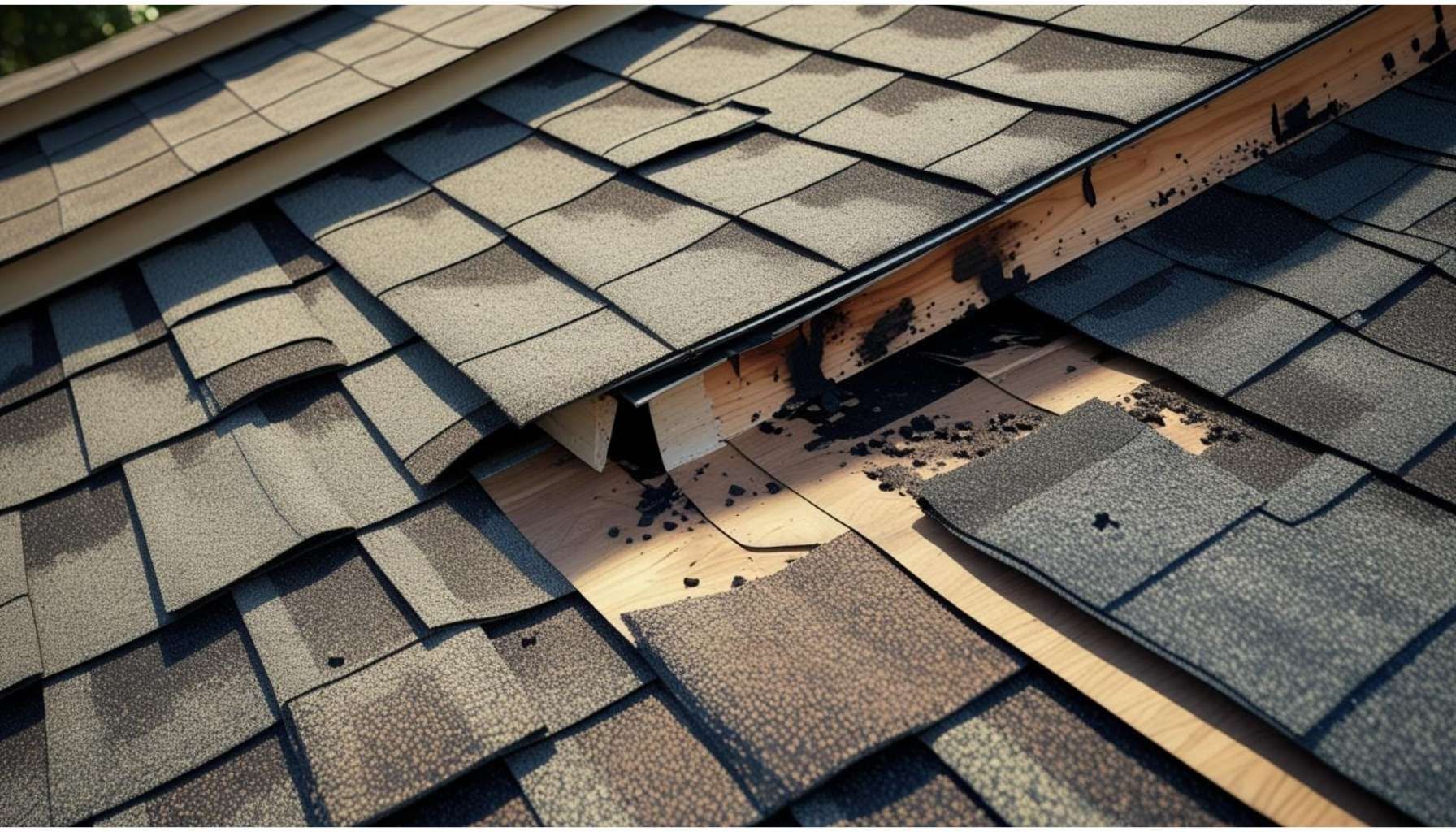
Recognizing when a roof approaches replacement age helps prevent costly water damage and structural problems. We've identified specific warning signs that indicate declining roof performance across different materials and ages.
Visual Warning Signs
Visual indicators provide the first clues about roof deterioration. Curling shingles occur when edges lift upward or center sections bubble, reducing water protection by 40%. Buckling appears as visible waviness running vertically up the roof slope.
Missing shingles create immediate vulnerability points. Each missing shingle exposes 1 square foot of underlayment to direct weather exposure. Cracked shingles split along stress lines, allowing water penetration during storms.
Granule loss accelerates after 15 years on asphalt roofs. Check gutters monthly for accumulated granules resembling coarse sand. Heavy granule deposits indicate advanced UV damage has weakened the protective coating by 60-70%.
Dark streaks or stains signal algae growth, particularly in humid climates. Algae retention increases moisture exposure by 25%, accelerating shingle breakdown. Moss growth between shingles lifts edges and creates water channels.
Structural Issues
Structural problems demand immediate attention to prevent interior damage. Sagging rooflines indicate compromised decking or rafter failure. A 2-inch sag over 10 feet suggests structural loads exceed design capacity by 30%.
Interior water stains reveal active leaks requiring professional assessment. Brown ceiling spots expand 20% monthly during wet seasons. Wall stains near exterior walls point to flashing failures around chimneys or vents.
Daylight visible through roof boards signals severe deterioration. Light penetration means water freely enters during precipitation. Attic inspections reveal compromised areas before interior damage occurs.
Damaged flashing around penetrations causes 85% of roof leaks. Separated or corroded flashing allows water behind shingles. Valley flashing deterioration creates high-volume leak paths during heavy rainfall.
Age-Related Deterioration
Material age directly correlates with failure probability. Asphalt shingles lose 50% of flexibility after 20 years. UV radiation breaks down petroleum compounds, creating brittleness that leads to cracking.
Climate accelerates aging differently across regions. Coastal properties experience 30% faster deterioration from salt spray corrosion. Desert climates cause thermal cycling damage, expanding and contracting materials 200 times annually.
Previous repairs indicate progressive failure patterns. Multiple patch jobs over 5 years suggest systematic deterioration rather than isolated issues. Maintenance extends lifespan 5-10 years but cannot reverse fundamental material breakdown.
Temperature extremes create cumulative stress damage. Freeze-thaw cycles crack shingles along weak points. Summer heat softens adhesives, allowing wind uplift during storms. Combined effects reduce expected lifespan by 15-20% in extreme climates.
How to Extend Your Roof's Lifespan
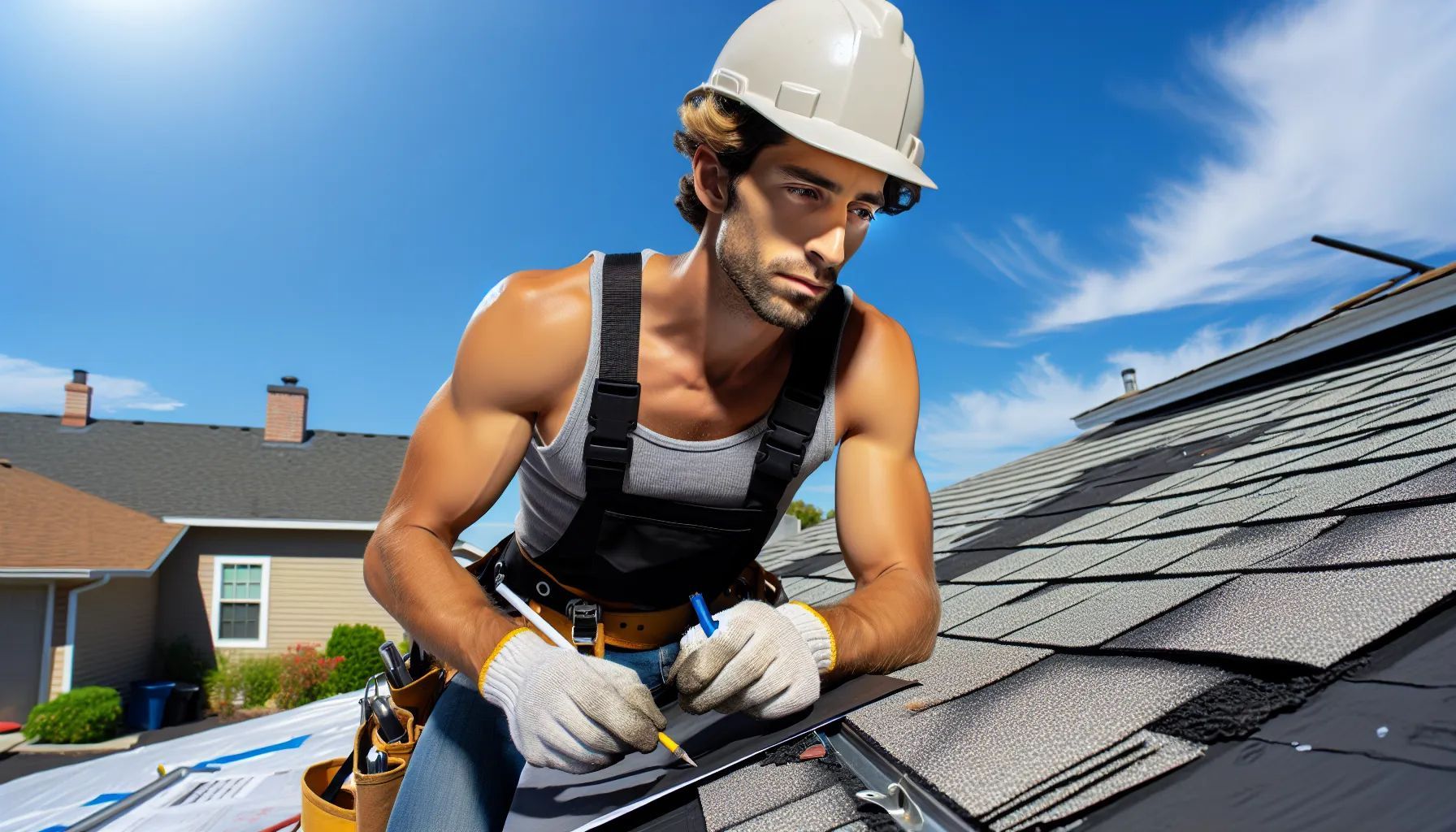
Extending your roof's lifespan requires consistent care and proactive measures. We can add years to our roof's functional life through systematic inspections, preventive maintenance, and timely repairs.
Regular Inspections
We recommend scheduling roof inspections twice annually - once in spring and once in fall. Professional inspectors identify early signs of damage including loose shingles, damaged flashing, and small leaks. Spring inspections reveal winter storm damage while fall inspections prepare roofs for harsh weather ahead.
Severe weather events demand additional inspections. Hailstorms, hurricanes, and heavy snow create immediate damage that worsens without prompt attention. Professional roofers spot problems homeowners often miss during ground-level observations.
Inspection frequency increases with roof age. Roofs over 10 years old benefit from quarterly inspections. Older roofs develop vulnerabilities faster than newer installations.
Documentation matters during inspections. Photographs and written reports track changes over time. This record helps identify progression patterns and supports insurance claims when damage occurs.
Preventive Maintenance
Gutter cleaning prevents water backup that damages roof edges and fascia boards. We clean gutters at least twice yearly, removing leaves, twigs, and debris. Clogged gutters cause water to pool under shingles, accelerating deterioration.
Tree branches pose multiple threats to roofs. Overhanging limbs scrape shingles during wind, deposit debris, and provide pathways for squirrels and raccoons. We trim branches maintaining 10-foot clearance from roof surfaces.
Small repairs prevent major replacements. Replacing individual damaged shingles costs $100-$300 while full roof replacement runs $5,000-$25,000. We address minor issues immediately including:
- Cracked or torn shingles
- Loose flashing around chimneys
- Small holes from fallen branches
- Missing granules on asphalt shingles
Licensed contractors ensure quality repairs. Professional roofers use proper materials and techniques that match existing roofing systems. DIY repairs often create additional problems through improper installation.
Addressing Problems Early
Early intervention saves thousands in repair costs. A small leak treated within days costs $200-$500. The same leak ignored for months causes structural damage costing $2,000-$10,000.
Water stains on ceilings signal active leaks requiring immediate attention. We trace stains to their source and repair damaged areas before water compromises insulation and drywall. Mold growth follows untreated water damage within 24-48 hours.
Flashing failures account for 95% of roof leaks. We inspect flashing around chimneys, vents, and skylights monthly. Cracked caulk and bent metal indicate imminent failure. Professional flashing repair extends roof life by 5-10 years.
Storm damage compounds quickly without repairs. One missing shingle exposes underlayment to UV rays and moisture. Adjacent shingles loosen without neighboring support. We replace storm-damaged materials within one week of occurrence.
When to Replace vs. Repair Your Roof
Making the right choice between roof repair and replacement saves thousands of dollars and prevents future structural damage. We'll examine the key factors that determine which option delivers the best value for your specific situation.
Cost Considerations
Roof repair costs typically range from $300 to $1,500 for minor fixes like replacing damaged shingles or sealing small leaks. These upfront expenses seem manageable compared to replacement costs of $5,000 to $25,000 for an average home. But, frequent repairs on aging roofs quickly exceed replacement costs within 3-5 years.
We calculate the break-even point by dividing replacement cost by annual repair expenses. For example, if replacement costs $12,000 and you're spending $3,000 yearly on repairs, replacement becomes cost-effective after 4 years. Insurance coverage also affects this calculation since most policies cover sudden damage but exclude wear-related issues on roofs exceeding 20 years old.
Labor costs comprise 60% of total roofing expenses regardless of repair or replacement. Material warranties provide additional value considerations: repairs typically include 1-2 year warranties while new roofs offer 25-50 year coverage. Energy efficiency improvements from modern roofing materials can reduce cooling costs by 10-30%, adding long-term savings that offset higher initial replacement investments.
Extent of Damage
Minor damage affecting less than 30% of the roof surface usually qualifies for repair. Examples include isolated leaks around chimneys, damaged flashing, or storm-related shingle loss in specific areas. Professional roofers assess damage using systematic grid inspections that divide roofs into quadrants for accurate evaluation.
Extensive damage indicators require immediate replacement consideration. Multiple leak points across different roof sections signal widespread deterioration. Sagging decking visible from the attic indicates structural compromise requiring complete removal and reconstruction. Water stains covering more than 25% of interior ceilings suggest systemic failure beyond simple repair solutions.
Age multiplies damage severity exponentially. A 10-year-old roof with 20% damage often responds well to targeted repairs. The same damage percentage on a 25-year-old roof indicates accelerated deterioration requiring full replacement. Storm damage assessment follows specific criteria: hail impacts exceeding 10 hits per square foot or wind damage affecting multiple roof planes typically necessitate complete replacement for proper insurance claims.
Future Planning
Your occupancy timeline directly influences the repair versus replacement decision. Homeowners planning to stay 10+ years benefit from replacement investments that eliminate recurring maintenance concerns and provide predictable long-term costs. Those selling within 2-3 years might choose strategic repairs that address visible issues without major capital expenditure.
Real estate data shows new roofs increase home values by $12,000-$15,000 on average, recovering 60-70% of installation costs at sale. Buyers often request $5,000-$10,000 price reductions for homes with roofs exceeding 15 years old, making pre-sale replacement a strategic investment. Home inspection reports flag roofs with less than 5 years remaining life as major concerns affecting purchase negotiations.
Climate migration patterns also influence roofing decisions. Homeowners in regions experiencing increased severe weather benefit from upgrading to impact-resistant materials during replacement. Planning for solar panel installation within 5 years favors immediate roof replacement to avoid removing panels for future roofing work. Regular maintenance extends any roof's lifespan by 5-10 years, making it essential regardless of your chosen path.
Conclusion
Understanding your roof's expected lifespan empowers you to make smart financial decisions and protect your home's value. We've explored how material choice, climate conditions, installation quality and regular maintenance all work together to determine how long your roof will serve you.
Remember that proactive care beats reactive repairs every time. By staying ahead of potential issues through regular inspections and timely maintenance, you'll maximize your roof's lifespan and minimize unexpected expenses.
Your roof represents one of your home's largest investments. Whether you're dealing with minor repairs or considering full replacement, the knowledge you've gained here will help you make confident decisions. We encourage you to schedule that inspection you've been putting off – your future self will thank you for taking action today.
How long does an average roof last?
The average roof lifespan varies significantly by material. Asphalt shingles typically last 15-30 years, metal roofs 40-80 years, clay tiles 50-100+ years, and slate roofs 60-150+ years. Factors like climate conditions, installation quality, and regular maintenance heavily influence these timeframes. Your specific roof's lifespan depends on local weather patterns, material quality, and how well it's maintained over time.
What are the main factors that affect roof longevity?
Key factors include climate conditions (temperature fluctuations, UV exposure, precipitation), material quality, installation workmanship, and maintenance practices. Extreme weather events, poor ventilation, and neglected upkeep can significantly reduce lifespan. Proper installation techniques, including correct nailing patterns and flashing details, are crucial. Regular inspections and timely repairs can extend your roof's life by 5-10 years.
How often should I inspect my roof?
Schedule professional roof inspections twice yearly, ideally in spring and fall. For roofs over 10 years old, more frequent inspections may be necessary. Additionally, inspect after severe weather events like hailstorms or high winds. Document all findings to track changes over time. Between professional inspections, visually check for obvious issues like missing shingles or sagging areas from the ground.
What are the warning signs that my roof needs replacement?
Watch for curling, buckling, or missing shingles, excessive granule loss in gutters, and widespread algae growth. Interior signs include water stains on ceilings, daylight visible through roof boards, and sagging rooflines. Multiple leaks, damaged flashing around chimneys and vents, and previous extensive repairs also indicate replacement needs. If your roof is approaching its expected lifespan with multiple issues, replacement is likely more cost-effective.
Should I repair or replace my aging roof?
Consider repair for minor damage on younger roofs, typically under 15 years old. Replacement becomes more practical when repair costs exceed 30% of replacement value or when damage is extensive. Your occupancy timeline matters too—long-term residents benefit more from replacement investments. Frequent repairs on older roofs often cost more than replacement over time. Consult professionals for accurate assessment.
How can I extend my roof's lifespan?
Regular maintenance is key: clean gutters bi-annually, remove moss and algae promptly, and address minor repairs immediately. Ensure proper attic ventilation and insulation to prevent heat damage. Trim overhanging branches that could damage shingles. Schedule professional maintenance contracts for comprehensive care. Early intervention on small issues prevents major damage, potentially adding 5-10 years to your roof's life.
